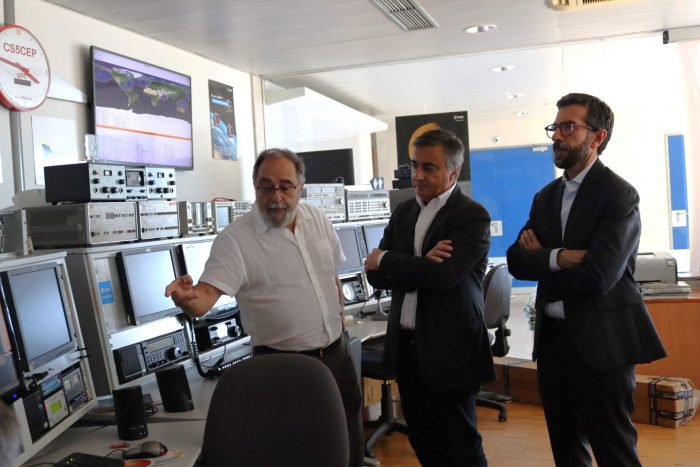IST NanosatLab receives a visit from Altice Portugal

Last Tuesday, September 12th, IST NanosatLab received a visit from Altice Portugal, an invitation extended by Professor Rogério Colaço, President of IST.
On October 1st, the Instituto Superior Técnico, through IST NanosatLab, will initiate the design project for a new satellite in collaboration with Altice Portugal and the University of Luxembourg. In light of this, the President of IST invited Altice Portugal for a visit to the facilities at the Taguspark campus, particularly the IST NanosatLab. The visit included the presence of Dr. Fernando Marta, Chief of Staff to the CEO of Altice Portugal, Engineer Alcino Lavrador, Director of Altice Labs, Professor Pedro Amaral, Vice-President of Técnico for Business Relations and Operations, Professor Rogério Colaço, President of IST, and Professor Rui Rocha, head of the laboratory and the guide for the visit.
“Welcome to IST NanosatLab, a laboratory created two years ago that brings together various efforts in the field of space that were previously scattered across departments, including the Department of Mechanical Engineering and the Department of Electrical Engineering, as well as some research institutes such as the Institute of Systems and Computer Engineering (INESC-ID), Institute of Telecommunications (IT), Institute of Mechanical Engineering (IDMEC), and the Institute of Systems and Robotics (IRS). The idea was to somehow bring together these synergies and create what could be a national university reference in terms of nano-satellite engineering,” Professor Rui Rocha began the visit with these brief words in the laboratory presentation.
The strategic objectives of IST NanosatLab were previously defined: to create a brand that will define the skills associated with the national reference at the academic level, engage interested individuals, and ultimately create critical mass. “These objectives follow the experience gained in the construction of the 1st satellite, ISTsat-1, which will go into space in the 1st quarter of 2024,” emphasized the professor.
After the laboratory presentation, attendees were able to witness the passage of a satellite in orbit, in real-time, using software for satellite prediction and tracking.
The visit served the purpose of strengthening ties between project partners and expanding the scope of interaction between the two entities.
